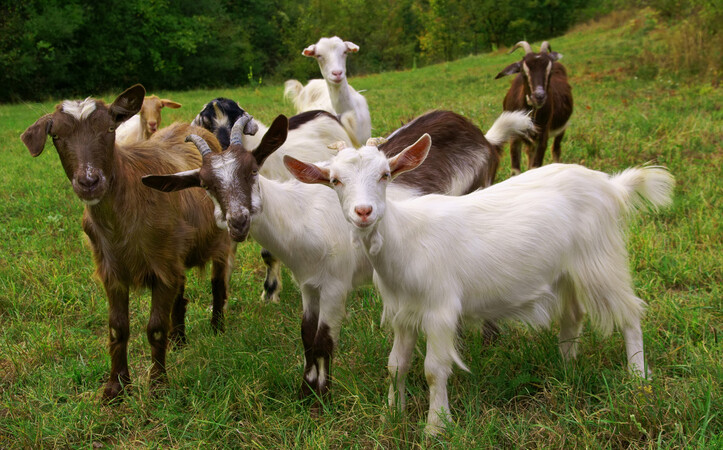

Pregnancy toxemia is a metabolic disorder of pregnant ruminants (pre-parturition) caused by abnormal metabolism of carbohydrates and fats, which occurs in the final stages of pregnancy. Ketosis (or ketonemia) is also a metabolic disorder associated with fat and carbohydrate metabolism but occurs after kidding during the early lactation stages. Both conditions are closely link and associated with negative energy balance.
Although many animals are able to cope and recover from a negative energy balance by metabolizing body fat albeit with a negative impact on productivity at the sub-clinical stage, some metabolize too much fat, become overwhelmed with the associated by-products (ketone bodies), and develop pregnancy toxemias (before kidding) and ketosis (after kidding).
Risk factors for pregnancy toxemia include carriage of multiple fetuses, age, and extreme body condition score (BCS). Obese animals carrying multiple fetuses are at highest risk to develop disease. Clinical signs of pregnancy toxemia are usually non-specific at the onset of disease and may include anorexia, isolation from herd mates, swollen lower limbs, tremors, blindness, coma and death. In dairy goats the final month of pregnancy is a critical period for the management of energy balance because approximately 60 – 80% of fetal growth occurs during this period, and because dry matter intake declines simultaneously. Pregnancy Toxemia can be fatal in Does and Ewes if not diagnosed in a timely manner, therefore, early identification of goats at risk of developing pregnancy toxemia increases the chances of recovery.
As the energy requirements of Does considerably increases with the onset of lactation, most Does will develop mild or lactational ketosis. Goats in early lactation loses excessive body weight if the feed intake quantity and quality is not adequate to meet the energy requirements of producing milk, hence animals are in negative energy balance. In dairy goats, clinical Ketosis manifests predominantly in early lactation. Does carrying multiple fetuses, undernourished or overweight animals are likely to develop clinical ketosis. Clinical signs include anorexia, recumbency, lethargy, muscle spasm of the head and neck (opisthotonos), dropped head, convulsion, sweet smelling breath, apparent blindness, bloat, teeth grinding, and frothy salivation.
Prevention of pregnancy toxemia and ketosis in goats is via nutritional management and identification of those animals at most risk. Feed intake should be monitored and adapted to meet the need of the Doe. The feed ration will invariably be different for pregnant and lactating animals and therefore body condition scoring is a useful way to monitor and identify animals at risk.
One of the guiding principles of sustainable livestock production is to feed high levels of roughage in the diet so as to promote good rumen digestion. However, as the doe progresses in the late stage of pregnancy, the energy density of the ration should increase to accommodate the inevitable reduction in dry matter intake. There is evidence that in intensively reared small ruminants access to external paddocks and grazing during the late stage of pregnancy will contribute to reduce the onset of pregnancy toxemia. Over fatness should be avoided in pregnancy wherever possible. Over-feeding from mid-pregnancy onwards leads to excessive fat being laid down internally.
Different protocols and definitions of pregnancy toxemia make it difficult to know what the ideal treatment should be, especially in severe cases. In general, once recumbency occurs the prognosis for recovery is poor. For this reason the focus should be on preventing the disease.
 Contact Jaguza Support
Contact Jaguza Support